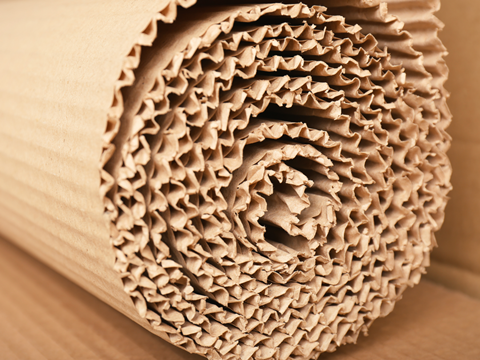
Smithers’ new market data report forecasts the shifting market dynamics and upcoming challenges in corrugated board packaging over the next five years – predicting ‘slight’ growth across 2024 and a ‘broader recovery’ in world demand.
The Future of Corrugated Board Packaging to 2029 calculates that global containerboard production reached 183.4 million metric tons in 2023, marking a -4% decline from the previous year. Of this figure, around 165 million tons were converted into cartonboard in a -7% decrease from 2022 – resulting in a value of $224.4 billion (€208,263,396,0000).
The outcome is linked to disruption caused by the COVID-19 pandemic in 2020; the disturbance in global logistics impacted demand, with price fluctuations leading to high inventories and, as a result, destocking.
However, value is set to increase to $231.7 billion (€215,034,977,5000) over the course of this year. After this, world demand is expected to increase at an average annual growth (AGR) of +2.5% per volume.
Corrugated volumes are set to reach a worldwide total of 190 million tons in 2029, while an AGR of +3.7% is anticipated to take value in the market up to $277.6 billion (€257,633,620,0000) at constant prices.
Smithers observes that many major containerboard suppliers have begun to invest in increased capacity. As such, low operating rates are predicted across the majority of the forecast period; and the multi-billion-dollar mergers between Smurfit Kappa and WestRock, as well as DS Smith and International Paper, among business moves expected to ‘redraw the commercial landscape for corrugated’.
Other companies are delaying further investment, taking extra downtime, or closing older mills and box plants in order to rationalize their operations.
Demand for corrugated packaging is expected to vary across the thirteen different end-use sectors examined by Smithers across the forecast period. For example, over 46% of corrugated packaging material consumption was attributed to the packaging and transportation of food products in 2023; despite remaining at a relatively constant level since 2016, it is expected to rise to 47% by 2029.
Smithers expects to see a ‘new surge’ for corrugated grades for processed foods, although this will be a slower process for fresh food and produce. The most attractive volume growth of all the products examined is attributed to electrical goods.
Reportedly, the recyclability of corrugated materials is increasing their favour among brands and legislators, both for transit applications and consumer-facing primary packaging. Converters are said to be gravitating towards finer, premium flute grades to compete with folding cartons in the cosmetics, confectionary, and consumer electronics sectors, among others.
The Packaging and Packaging Waste Regulation’s upcoming bans on particular single-use plastic formats by 2030 – e.g. smaller volume produce packs and collation films for multipack beverage and food – are also thought to unlock new opportunities for corrugated packaging. If non-PFAS oil- and grease-resistant coatings can be integrated into existing corrugated lines, Smithers identifies further potential in foodservice applications.
Meanwhile, the rising popularity of budget grocery chains in developed markets, and of retail infrastructure across Asia, is thought to cause an increase in sales of retail-ready packaging (RRP) boxes. Some converters are expected to install a ‘new generation’ of high-throughput inkjet presses for corrugated board in order to produce higher-quality customized RRP.
E-commerce shippers are expected to benefit from the same equipment. When combined with design innovations, it is hoped to provide consumers with visually appealing boxes designed for their ease of use, while also enhancing branding and consumer returns.
Overall, the report conducts market, commercial, and technical analysis of capacity changes, pulp pricing, and end-user demand to conduct its market forecasts. It predicts capacity, supply, and demand for containerboard and converted corrugated board by both value and volume – providing over 350 tables and figures to support its views – and is organized by corrugated board grade, end-use application, and geographic region and national market.
The Future of Corrugated Board Packaging to 2029 is now available to purchase for €6,350, £5,475, or $6,750.
At the end of 2023, NOA managing director Neil Osment looked back at the status of Europe’s corrugated and folding cartons sectors amid the cost-of-living crisis and rising inflation and interest rates.
Cepi has also revealed a preliminary statistics support suggesting that high energy costs, a poor economic environment, and destocking all contributed to a decline in Europe’s paper and board production in 2023.
Another report from Smithers looks ahead at the progress of reusable and refillable packaging over the next five years – predicting that it will reach a global value of $28.20 billion (€2,645,583,000,000) in 2024, and that formats for refill in store and refill/return at home will increase in the lead up to 2029.
If you liked this story, you might also enjoy:
How are the top brands progressing on packaging sustainability?
The ultimate guide to global plastic sustainability regulation











1 Reader's comment